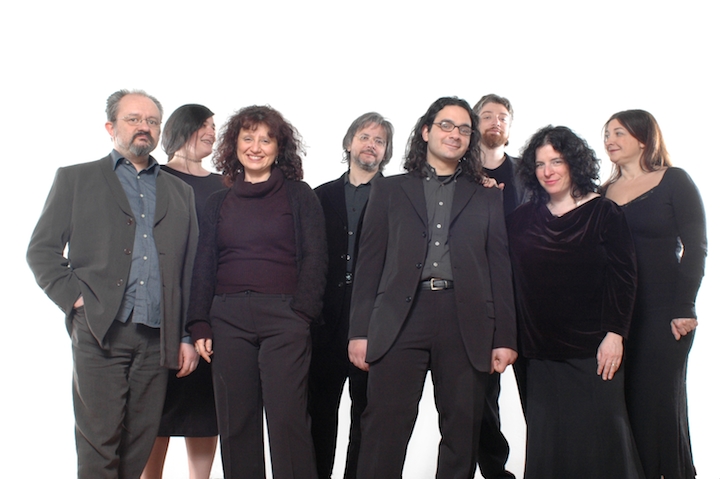
You can enjoy Ensemble Lucidarium’s Toronto concerts on Friday and Saturday for the 16th century music, much of it folk-derived. You can also enjoy them as a peek into a fleeting moment of free cultural and religious cross-pollination half a millennium ago.
- Classical Music 101: What Does A Conductor Do? - June 17, 2019
- Classical Music 101 | What Does Period Instrument Mean? - May 6, 2019
- CLASSICAL MUSIC 101 | What Does It Mean To Be In Tune? - April 23, 2019
Ensemble Lucidarium, based in Italy, may look and sound like one of many consorts specializing in pre-17th century music, but they are highly specialized. In May, they will celebrate the 10th anniversary of their first performance of La Istoria de Purim (The History of Purim), which revolves around the music and poetry of Jewish communities in Renaissance Italy.
American expat Avery Gosfield, who co-directs the ensemble with husband Francis Biggi, paints a fascinating portrait of Jewish communities intermingling with their gentile Italian neighbours to the point where they shared the same music, if not the same texts.
“You might hear the same music at a circumcision and at a Christening,” says Gosfield of a time when Jews had migrated south to Italy from Germany, finding a burgeoning humanist culture ready to appreciate their religion and traditions. The Jews returned the favour.
Unlike later communities of Jews in eastern Europe, where Yiddish was spoken at home and, say, Polish in the streets, the Italian Jewish people of the Renaissance spoke Italian at home, and those who spoke Yiddish started mixing Italian words freely into their everyday speech, poetry and songs.
Gosfield and her consort have prepared a musical programme that celebrates this free mixing of languages and cultures. It also celebrates the free interweaving of the sacred and secular.
The programme “reflects the permeability of that place and time,” Gosfield explains. “It wouldn’t have been unusual for a rabbi to sing a prayer to a song he just heard on the street.”
Like every Early Music consort in existence, Ensemble Lucidarium performs La folia, a popular musical theme that repeats in ever more elaborate variations. It gets a specific twist in this programme, though. “There is a chant before it, and it sound like 19th century music after it,” says Gosfield. “There weren’t scholars present; people sang what they liked.”
Many of the songs of this place and time were written in a specific folk style of eight 11-syllable lines per verse. They have come down to us as texts, so Gosfield and her consort colleagues have spent years finding the right music to match with the poetry.
One of the most useful sources of the texts has been a compilation of 60 songs by scholar Diana Matut. Gosfield laughs at how one of them, transcribed in Hebrew, is a Lutheran chorale.
Gosfield is relieved that she and her fellow travellers can work in a more free atmosphere today, as the Early Music music unshackles itself from the imperatives of authenticity. There is no one alive who knows exactly which tunes went with which poem, so even if Ensemble Lucidarium brings all the right instruments and vocal techniques to the stage, it’s still a big guessing game.
“Even when you have all the notes, you’re playing in a completely different context. We’re really removed from that stuff, so a lot of time even having the notes gets us only a little bit closer; there’s so much information missing,” Gosfield admits. “We perform the music not as it was performed, but in the way it was meant to be performed.”
That means making music as a way of celebrating community, of enhancing worship, and sharing life’s important events with singing and dancing.
Those are all things that will always transcend specific languages, cultures and religions.
+++
For more information on Ensemble Lucidarium’s concerts at Trinity-St Paul’s Centre on Friday and Saturday, click here.
You can read more about the work of Ensemble Lucidarium here.
In this clip, Gloria Moretti and Ensemble Lucidarium peform a song by Italian-Jewish Renaissance poet Deborah Ascarelli:
+++
The history of Jewish migrations, exiles, and their later segregation into ghettoes in Italy in the 16th century makes for fascinating reading about a time of huge intellectual curiosity in Europe.
There is a beautifully realised, fascinating introduction to this place and time in the five-year-old catalogue of Il Ghetto: Forging Italian Jewish Identities, 1516-1870, produced by the Museo Italoamericano in San Francisco. You can peruse it here.
- Classical Music 101: What Does A Conductor Do? - June 17, 2019
- Classical Music 101 | What Does Period Instrument Mean? - May 6, 2019
- CLASSICAL MUSIC 101 | What Does It Mean To Be In Tune? - April 23, 2019



